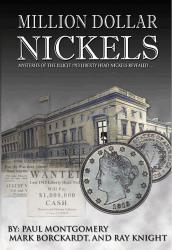

However, unlike the American coin, which was 75% copper and 25% nickel, the Canadian coin was pure nickel, as Canada was the world's largest producer of the metal. In 1922, silver was removed entirely from the five-cent coin, replacing it with a coin of roughly the same dimensions and mass as the American nickel. With the exception of some 1968 dimes struck at the Philadelphia Mint, all Canadian coins since 1908 have been minted in Canada.ĭue to a rise in the price of silver, Canadian coinage was debased from sterling silver (925 fine) to 800 fine in 1920. Although the American denomination was introduced as a larger copper-nickel coin in 1866, and the five-cent silver was retired in 1873, the Canadian five-cent coins remained small and silver until 1922.Īll Canadian coins (including five-cent coins) were struck in England at the Royal Mint (no mint mark) and the Birmingham Mint ( H mint mark) until 1908, when the Ottawa branch of the Royal Mint opened. The coins were the same size and general composition as the corresponding American coins of the time, so the five-cent coin was based on the half dime. The first ever Canadian five-cent coins were struck by the Royal Mint in London as part of the introductory 1858 coinage of the Province of Canada. The coin is produced by the Royal Canadian Mint at its facility in Winnipeg.


However, the characteristic shape was retained for another nineteen years after 1944 when this coin was later produced in 99.9% nickel and chrome-plated steel. Originally this was done to distinguish the copper-coloured tombac coins, from pennies. As a result, pre-1982 five cent pieces are often sought by collectors.įrom 1942 to 1963, Canadian five-cent coins were produced in a distinctive 12-sided shape, evocative of the British threepence coin.

Only cupronickel and modern multi-ply plated steel five-cent pieces are considered "circulation coins". Due to the aforementioned rise in nickel prices, since 1982, five-cent pieces composed of 99.9% nickel have been slowly removed from circulation to be melted by the Royal Canadian Mint. Rising nickel prices eventually caused another switch to cupronickel in 1982 (an alloy similar to the US nickel), but more recently, Canadian nickels are minted in nickel-plated steel, containing a small amount of copper. A plated steel version was again made from 1951 to 1954 during the Korean War. Versions during World War II were minted in tombac (a copper-zinc alloy), then chrome and nickel-plated steel, and finally returned again to nickel at the end of the war. These coins were magnetic, due to the high nickel content. The larger base metal version made of nickel, and called a "nickel", was introduced as a Canadian coin in 1922, originally as 99.9% nickel metal. The denomination (i.e., the Canadian five-cent piece) had been introduced in 1858 as a small, thin sterling silver coin, that was colloquially known as a "fish scale", not a nickel. Due to inflation, the purchasing power of the nickel continues to drop and currently the coin represents less than 0.5% of the country's lowest minimum hourly wage. It became the smallest-valued coin in the currency upon the discontinuation of the penny in 2013. It was patterned on the corresponding coin in the neighbouring United States. The Canadian five-cent coin, commonly called a nickel, is a coin worth five cents or one-twentieth of a Canadian dollar. These are always interesting pieces that are worth more than just five cents! Of course, be sure to keep an eye out for errors and varieties. They're worth about $10 and up in circulated grades.
#NICKELS WORTH MONEY SERIES#
Jefferson nickels remained largely unchanged from their launch in 1938 until 2004, when the Westward Journey nickel series kicked off.


 0 kommentar(er)
0 kommentar(er)
